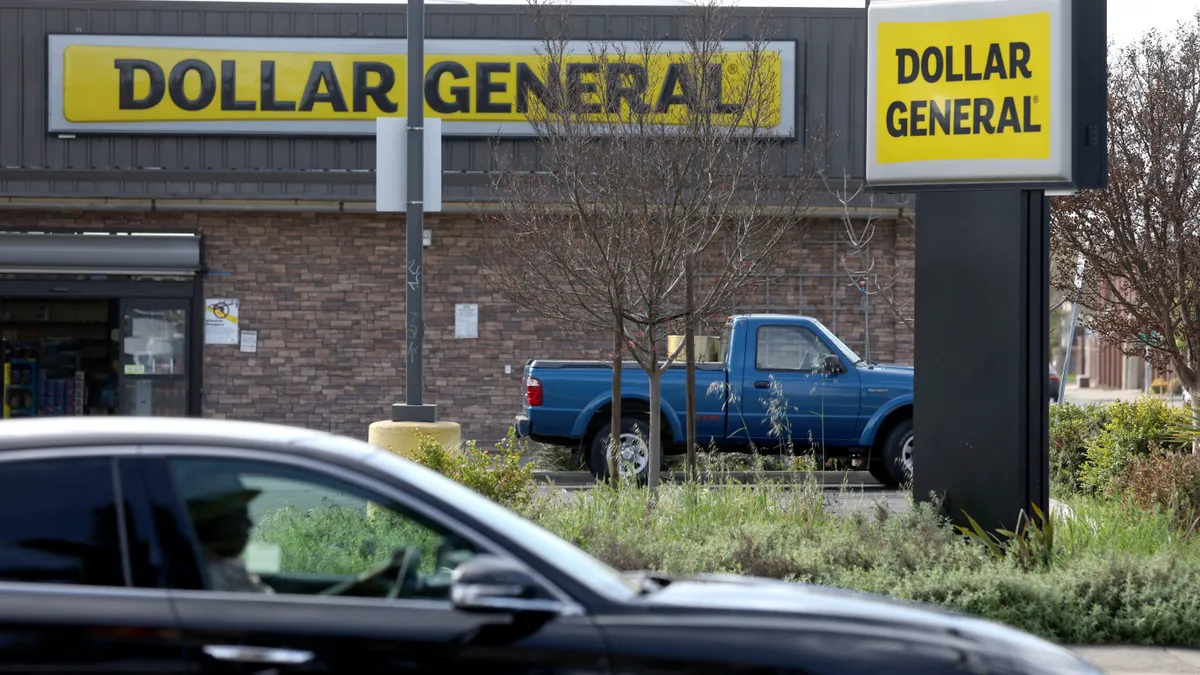Dive Brief:
- Dollar General’s strategy to cut back on items it sells and quickly replenish high-demand products in its stores appears to be resonating with customers, executives said during a May earnings call.
- The discount retailer has been focusing on cutting costs, necessitating the retooling of its supply chain though new distribution centers and a heavier reliance on its own trucking fleet.
- As store sales improve, optimizing inventory will remain a high priority for the company, CFO Kelly Dilts said on the call, adding that scaling back in-store inventory “simplifies things both upstream in the supply chain as well as in our stores.”
Dive Insight:
Dollar General’s focus on selling more consumables and marking down more inventory contributed to Q1 net sales increasing 6.1% to $9.9 billion compared to $9.3 billion a year ago, according to a Q1 earnings press release. The retailer also credited elevated in-store traffic for a 2.4% year-over-year increase in same store sales.
The change in strategy aligns with the turnaround plan set by CEO Todd Vasos, who returned to the company in October 2023 following the departure of Jeffery Owen.
What the company calls its back-to-basics strategy also involves reducing the number of products sold in stores, which also is part of the retailer’s effort to sell excess inventory, Vasos said on the call.
Vasos said the retailer is committed to a net reduction of up to 1,000 SKUs within its supply chain by year’s end, noting that “we are well on our way to meeting that goal.”
Fewer products moving through its warehouses should ease distribution constraints, according to Vasos, who noted the retailer is also focused on restocking merchandise sought by its core customers, he said.
“Our distribution and transportation teams have taken aggressive action to improve their service to our stores, and these efforts have led to significantly higher OTIF levels compared to the same time last year,” he said.
Vasos said Dollar General expects to experience improved distribution efficiencies after it exits 12 temporary warehouses and moves into new permanent facilities in Arkansas and Colorado later this year.















